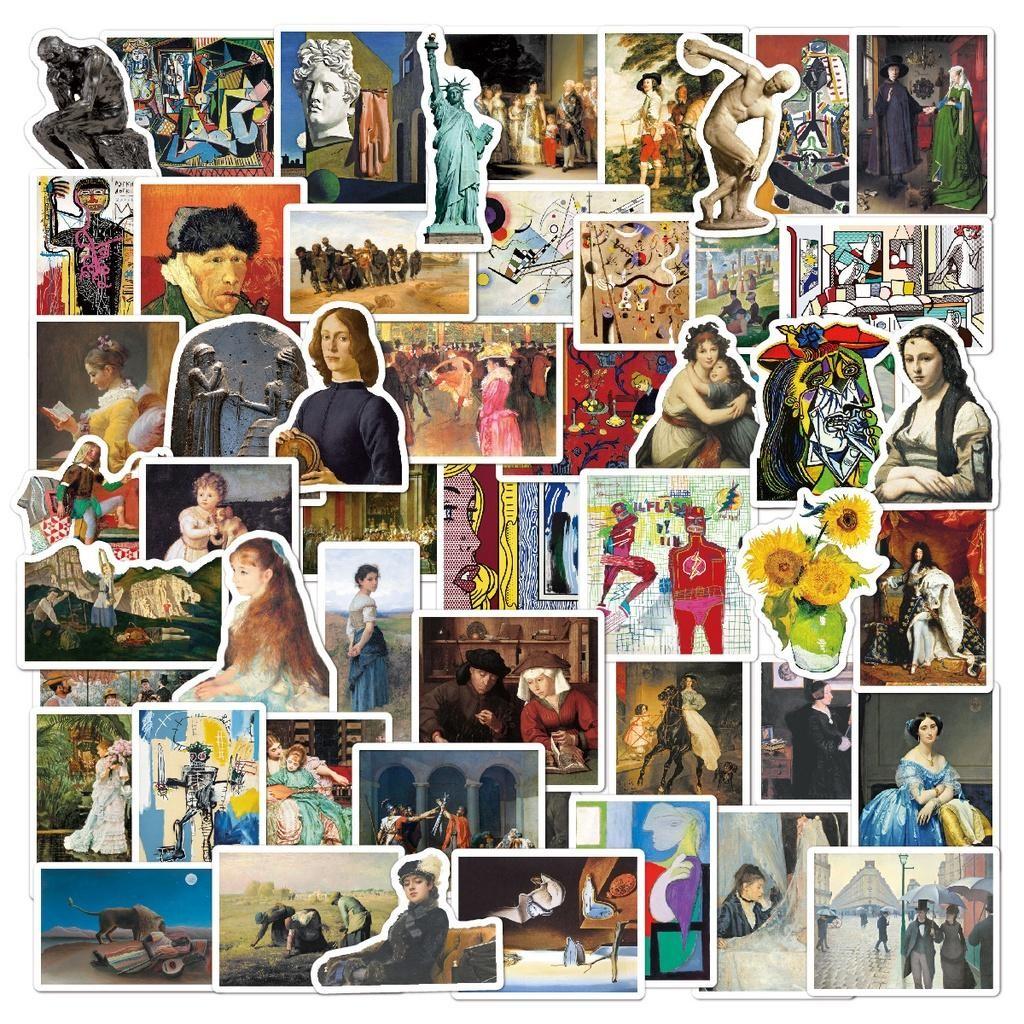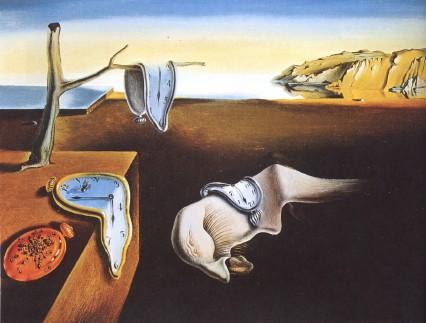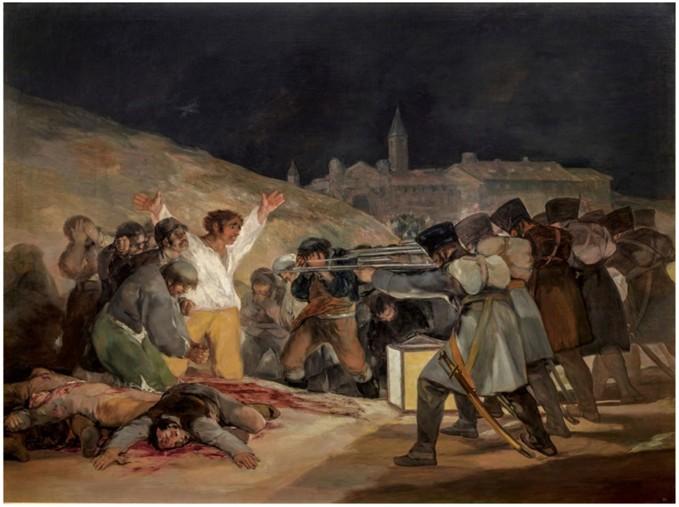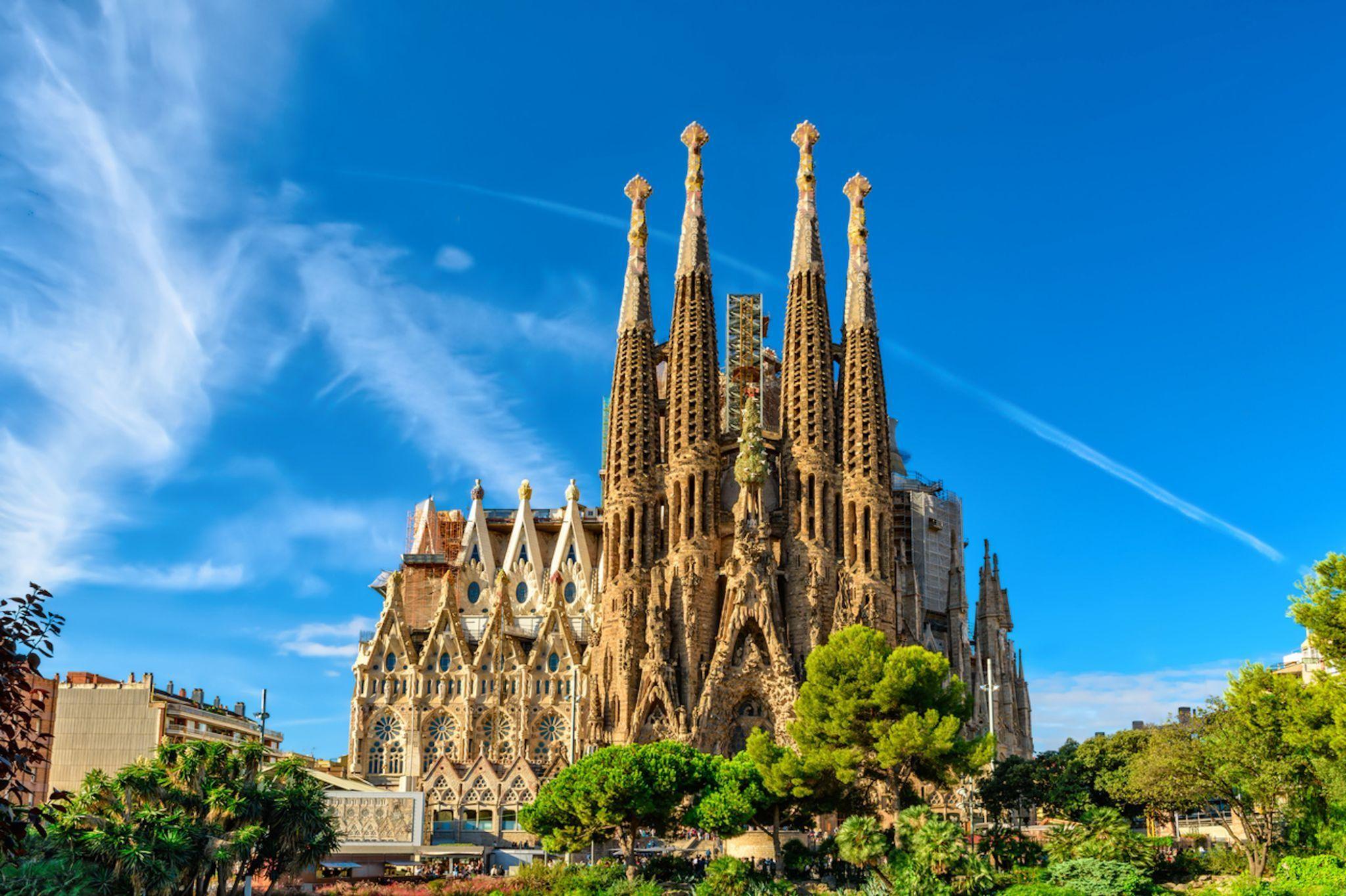ARTWORK

by English C1 students school year 2022/23

“La persistència de la memòria” by Salvador Dalí
This masterpiece has always caught my eye, mainly because of the clocks, giving me the understanding that time passes very quickly. Time is not static and this is why clocks melt with the passage of years; it grows old just like us. There´s something that terrifies me. Not only that time passes so fast to me but also that over the years our minds deteriorate, reaching a point where I´m aware that I have begin to forget things that I used to remember well.
I associate the passage of time with the elderly, and therefore with the atrophy of our body and mind, and it scares me to death that this last one will atrophy so bad that you can even forget your own name. That´s awful. For me, losing your memory, your mind, is like losing yourself, without even knowing who you are, like being brain dead.
The style used in this painting is surrealism and its technique is oil on canvas. This is a quite complex and stunning piece of art. Several symbols are represented, for instance, we can observe three clocks symbolizing non-linear time where the past, present and future exist simultaneously, just like in dreams. The fourth clock is solid and represents the present time, a linear one. This one is full of ants and the author associates them with rottenness and death. One can also highlight a huge sea that symbolizes eternity and immortality, and a large deserted beach where the author portrays himself in a very peculiar way.
This striking artwork portrays an extravagant landscape through Dalí´s vision and it evokes a certain kind of madness in me, which reminds me that I can´t control time; time controls me.
 Andrea Planas
Andrea Planas
LOS FUSILAMIENTOS
I chose this artwork because of the way that it made me feel the first time I saw it in El Museo del Prado: I was a teenager with neither education in art or interest in it but there I was, finding myself petrified, amazed, crying, feeling the terror, the sorrow of their characters. Feeling but also thinking about how their daily life could be, what events could lead them to such a terrible situation.
Despite being a court painter, Goya could manage to use his gift for telling stories and in a Madrid in war, there were a lot of painful stories to tell. Los fusilamientos del 3 de Mayo is the most iconic artwork among the ones around the topic of the war.

Formally speaking, it is a very dynamic picture, with a lot of movement and a strong brushstroke. Being apparently realistic, it is a romantic representation where the soul and feelings of the main characters are strongly transmitted.
It is groundbreaking because the perspective is changed: It doesn´t show a famous battle or a decorated hero´s portrait, it tells us the story from the point of view of the victims, highlighting the anonymous heroes, focusing the attention on their pain, not on the cruelty of the executors whose faces we can´t see. It is democratic and popular from this point of view and represents a real turning point in this sense. Could Goya, through this artwork, be the first photojournalist?
Olga Matas Oil on canvas by Francisco de GoyaI have chosen this artwork due to the strong feelings it conveyed to me the first time I saw it and the art movement behind it.

This masterpiece, painted by Caspar David Friedrich’s, dates from 1817 and encapsulates the dreamy idealistic spirit of European Romanticism. The man standing backwards on a high dark rock is admiring an unknown and astounding landscape covered with fog.

From my point of view, the overall image transmits authentic isolation, serenity and selfreflection. It reminds me in some way of the uncertain future we have in front of us. However, we can only make assumptions about how it is because we cannot see what lies ahead before we dive into it.
Furthermore, there is this concept of coming from somewhere, the man can turn around and remember the path he left behind, the obstacles he faced, and the problems overcome during his journey to the top.
Finally, concerning the colours, Friedrich uses a slightly brighter palette than usual, those complete the mood helping to awaken the emotions. He mixes harmonic pastel blues and subtle tones of pinks across the sky with the mountain and rock in the distance echoing these colours as well as painting the figure in a dark colour to maintain the mystery and focus the attention on the man.
Daniela GamezThe Kiss - Gustav Klimt
This iconic work of art called “The kiss” by Gustav Klimt is one of the most famous paintings in the world and it really fills the room of the Belvedere museum, where it’s placed.
I chose this painting because it really blows me away everytime I see it and because from the moment I saw it in the museum, I was so impressed I almost cried. It has something so magnetic and magical that you can’t stop looking at it.
Klimt was criticised for being too risky and daring when painting the female body and his representation of love, and some people called his paintings pornographic or perverted. Otherwise, “the kiss” was received as pure and innocent, showing a couple expressing their love with a cheek kiss surrounded by nature and bright and shiny colors, such as yellow and gold.

Talking about the materials, style and colours that Klimt used in this painting, it’s important to remark the use of oil and golden leaves. Inspired by a trip he made to Ràvena and its Byzantine mosaics which used a lot of gold, the painter started to paint with this material to give more light and sparkle to his works and enlight its figures. The style is also influenced by the Art nouveau and the contemporary arts and crafts forms.
Finally, to talk about what this painting symbolizes, there are different theories about who the girl being kissed is. Some theories say that she was his companion Emilie Floge, while others believe that she was the model known as “Red Hilda”. There are also different theories about that story that it’s told and about who are this couple. Most of the theories are related to the mythology, given that it’s believed that they could be Apolo and Dafne or Euridice and Orpheus, two couples suffering and punished for and by love.
Laura Avellaneda CanaletaBANKSY'Keep your coins, I want change'
I have chosen Banksy's street art 'Keep your coins, I want change' as it symbolises the harsh treatment of poor people in society, specially homeless that are generally mistreated. I really like Banksy as a political activist and the way he uses crude images that are combined with slogans.

As a matter of fact, this piece evokes the weakness of nowadays society and how people can’t help but care about materialistic things. Personally, I reckon that we all should appreciate criticism of capitalism in order to enhance today's lifepatterns. I definitely find this piece very thought-provoking, unconventional and, ultimately, an iconic piece of street art.
On the other hand, it is worth noting his technique, he probably uses stencil graffiti to paint his pieces faster in public places and, in this manner, he has managed to create his own style which people can easily recognise.
Last but not least, its symbology is pretty important, specially the use of language. The sentence is not "I want to change" which would mean that the homeless wants to become a different person but "I want change" which means that the homeless wants changes to happen around, like changing society.
In my humble opinion, under no circumstances should we accept having people begging on the streets for Christmas time and beyond.
Omar PalaciosOtto Lucero - IDIDI
I have chosen an unknown and underground artist: Otto Lucero. This graffiti represents a dear friend who passed away at a very young age. It represents who she was in all her glory.
Ididi is a nickname/alias that Idoia earned. The origin of this alias is because she was short and full of love and it was a sweet way to call her. Everyone who knew this pretty girl knows that she was a little can filled with good energy, in fact there are two phrases written on the wall next to the graffiti where it says:
“Everything that does not vibrate the same as you will disappear from your life. Don't feel bad about evolving. You have not lost anything, you have gained yourself.”
“We will always remember your smile. Your body is gone but your love will always remain in our hearts. We will miss you. We love you.”
You can visit this graffiti for free because it is painted on a wall of “El Parc del Litoral” in Sant Pol de Mar, in front of the sea. It also has tiger and leopard hair pattern painted around the main painting because it symbolizes Idoia’s soul. The rose that is on her right ear reminds us of her passion for the flowers and how she liked to always carry one of these. The other outfits such as the headband, the scarf, the earrings and the piercing define her style 100%.
In my opinion it is the best way to remember her. I miss her so badly.

Monet - Cliff Walk at Pourville

I have chosen this artwork by Claude Monet because it is one of my favorite paintings. The colors and style of this painting caught my attention the first time I saw it. Somehow, this painting transports me to spring, it makes me feel that I am in that place.
Monet was the key figure of the Impressionist movement. In fact, it was a painting of his that gave the movement its name. This movement is characterized by its persistent experimentation with lighting. I think that this style is precisely what makes this painting different, nothing special is happening in the image but for some reason you can't stop looking at it.
Monet's wife, Camille, had died three years earlier and the artist had had enough of the city. That is why he decided to leave everything in February 1882 and travel to Normandy to rest a bit and get as far away from "civilization" as possible. Pourville was a small Norman fishing village. There was hardly anything reminiscent of the urban. Monet immediately fell in love with the site and its surroundings, which inspired him to create this work of art.
Paula MurioSagrada Familia, Antoni Gaudí
I have chosen the Sagrada Familia of Antoni Gaudí because it is his most iconic building and the pinnacle of his work, but I could have chosen any other work from him and here is why.

Gaudí was one of the most innovative architects of his era, pioneer in many fields and in the vanguard of construction. Many of his techniques are nowadays still unique and relevant in architecture to this day. To name but a few, the catenaries, the hyperbolic paraboloids and the Catalán vault.
The Sagrada Familia was and still is one of the most characteristic buildings on the Barcelona skyline. Built in the Catalan Modernism style, it is still unfinished and the construction is planned to end in 2026. Started more than one-hundred and forty years ago, the project has gone through 9 architects to this day. The building survived the civil war but lost all the work Gaudí did in a fire caused by an attack from the republican side.
As a fun fact, the initial height of the basilica was planned to be one-hundred and eighty meters, but Gaudí lessened it to one-hundred and seventy-two and a half because the height of the mountain of Montjuïc is one-hundred and seventy-seven and, as he said, “The man’s construction cannot surpass God’s one”.
Photo byTHE CREATION OF ADAM
 David Michelangelo
David Michelangelo
I have chosen this painting, because when I was in Rome visiting the Sistine Chapel's ceiling, this artwork had a huge impact on me.
It was painted by the Italian artist Michelangelo, a Renaissance genius, whose sculptures are also astonishing. This masterpiece is found in the Church of San Pietro in Rome.
It represents God and Adam with their fingers almost touching each other and symbolizes the Genesis scene in which God creates man in his own image. The fact that the piece shows us a nude male is a symbol of perfection, because on the left side of the painting ,we can appreciate a very muscular body. On the right side, God is surrounded by angels and his look makes a big contrast with the young man Adam.
In my opinion, all the works by Michelangelo are stunning, but this painting made me feel very impressed, because of the perfection of the human bodies, which is also seen in his sculptures.


